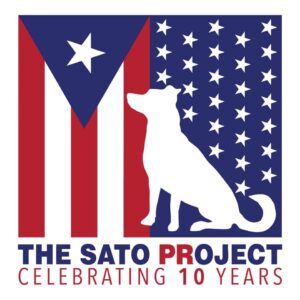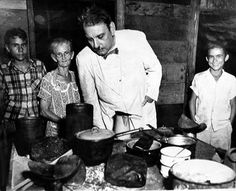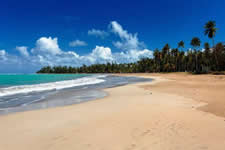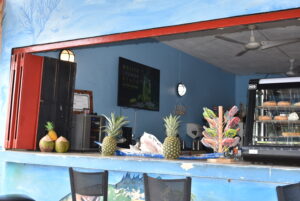The Sato Project is dedicated to rescuing abused and abandoned dogs in Puerto Rico
Our Mission
The Sato Project is dedicated to rescuing abused and abandoned dogs from Puerto Rico. There are currently an estimated 500,000 stray dogs roaming the island’s streets and beaches. With no access to food, fresh water, or veterinary care, many of these dogs are living daily lives of severe suffering. The municipal shelter system is drastically overwhelmed, with only five shelters across all 78 of the island’s municipalities. These shelters have a combined euthanasia rate of over 94%. For thousands of stray and abandoned dogs across Puerto Rico, we are their only hope.
What We Do
The Sato Project is determined to end this suffering. Our small but mighty team works around the clock to save as many lives as possible. We address the underlying causes of and solutions for Puerto Rico’s stray dog crisis through six primary programs:
- Rescue and Rehabilitation
- Freedom Flights to the Mainland
- Spay/Neuter Community Outreach
- Adoption & Shelter Placement
- Disaster Relief
- Education & Awareness
The Sato Project primarily works in the municipality of Yabucoa, on the southeastern coast of the island, which has been rated the poorest of all 78 Puerto Rican municipalities. The median household income is well below the national average and over half of its population lives below the federal poverty line. Yabucao is also where Hurricane Maria first made landfall in 2017 and caused the most severe devastation.
Since our founding, we have concentrated our rescue efforts on a place known as Dead Dog Beach, a notorious dumping ground for abused and abandoned dogs. Our Founder and President, Chrissy Beckles, started rescuing one dog at a time from this beach until she officially founded The Sato Project in 2011. Thanks to 10 years of our rescue and community outreach work, Dead Dog Beach has been almost entirely cleared of dogs, allowing us to expand our efforts into the wider Yabucoa community and diversify our programs to address the underlying causes of the island’s stray dog epidemic. Since 2011, we have rescued more than 5,500 dogs from the streets and beaches of Puerto Rico and flown them to new lives on the mainland. We have also spayed/neutered more than 7,000 dogs and cats through our spay/neuter community outreach programs.
Puerto Rico has gone through a lot of changes since 2011, including deadly Hurricane Maria and Hurricane Irma in 2017, political unrest in 2019, and the devastating earthquakes at the beginning of 2020 followed by the COVID-19 pandemic. The Sato Project continues to evolve our efforts to meet the needs of ever-changing circumstances. However, through it all, our primary goal has always stayed the same: to save as many lives as possible and end Puerto Rico’s stray dog crisis once and for all.
The Sato Project is making permanent change in Puerto Rico. We encourage you to join us. Learn more about our life-saving efforts by clicking on any of our program links above or watching this video below produced by CNN in 2015.
Doggie Rescues - How to Adopt, adoption Procedure and Application
How to Help
Volunteer - The Sato Project runs almost entirely on the passion and dedication of our many wonderful volunteers. Are you interested in joining our team?
Donate - The Sato Project depends entirely on charitable donations to rescue, rehabilitate, and find loving homes for abused and abandoned dogs in Puerto Rico. The Sato Project is a 501(c)3 organization, and gifts are fully tax-deductible.








 Due to his father's political involvement, Muñoz Marín’s childhood was dived between the United States and the island. His education was in English due to his upbringing and the colonial stipulation in Puerto Rico. He was enrolled briefly at Georgetown University Law Center by his father, but Muñoz Marín aspired to be a poet. After his father died in 1916, he became the secretary of Félix Córdova Dávila, the Resident Commissioner of Puerto Rico at the time. However, he left the position to pursue journalism in New York, where he lived a Bohemian lifestyle.
Due to his father's political involvement, Muñoz Marín’s childhood was dived between the United States and the island. His education was in English due to his upbringing and the colonial stipulation in Puerto Rico. He was enrolled briefly at Georgetown University Law Center by his father, but Muñoz Marín aspired to be a poet. After his father died in 1916, he became the secretary of Félix Córdova Dávila, the Resident Commissioner of Puerto Rico at the time. However, he left the position to pursue journalism in New York, where he lived a Bohemian lifestyle. In 1948, the United States Congress granted Puerto Rico the right to elect its governor, making Luis Muñoz Marín the first democratically elected governor of Puerto Rico. During Muñoz Marín’s political regime, Puerto Rico passed from being a U.S. territory to a commonwealth. On June 8, 1950, the United States authorized Puerto Rico to draft its constitution in 1951, thus creating the Commonwealth of Puerto Rico. On July 25, 1952, the Estado Libre Asociado was established, and the government under Muñoz Marín's regime began promoting cultural events to combat the possible Americanization of the island.
In 1948, the United States Congress granted Puerto Rico the right to elect its governor, making Luis Muñoz Marín the first democratically elected governor of Puerto Rico. During Muñoz Marín’s political regime, Puerto Rico passed from being a U.S. territory to a commonwealth. On June 8, 1950, the United States authorized Puerto Rico to draft its constitution in 1951, thus creating the Commonwealth of Puerto Rico. On July 25, 1952, the Estado Libre Asociado was established, and the government under Muñoz Marín's regime began promoting cultural events to combat the possible Americanization of the island. Researched and Written by: Arantxa Quiñones is a translator and nonfiction writer based in San Juan, Puerto Rico. For more of her work or to Contact her, please check out her
Researched and Written by: Arantxa Quiñones is a translator and nonfiction writer based in San Juan, Puerto Rico. For more of her work or to Contact her, please check out her 
 Parallel to Luquillo Beach along the PR-3 highway is a roadside strip of 60 restaurants, bars, and gift shops called
Parallel to Luquillo Beach along the PR-3 highway is a roadside strip of 60 restaurants, bars, and gift shops called  Those looking for an outdoor adventure can travel just outside the city to the
Those looking for an outdoor adventure can travel just outside the city to the  FILE - In this March 10, 2021 file photo, a healthcare worker injects a man with a dose of the Moderna COVID-19 vaccine during a mass vaccination campaign, at the Maria Simmons elementary school in Vieques, Puerto Rico. A spike in cases and hospitalizations has put medical experts at odds with the government, which is struggling to protect people’s health while also trying to prevent an economic implosion on an island battered by hurricanes, earthquakes and a prolonged financial crisis. (AP Photo/Carlos Giusti, File)
FILE - In this March 10, 2021 file photo, a healthcare worker injects a man with a dose of the Moderna COVID-19 vaccine during a mass vaccination campaign, at the Maria Simmons elementary school in Vieques, Puerto Rico. A spike in cases and hospitalizations has put medical experts at odds with the government, which is struggling to protect people’s health while also trying to prevent an economic implosion on an island battered by hurricanes, earthquakes and a prolonged financial crisis. (AP Photo/Carlos Giusti, File)